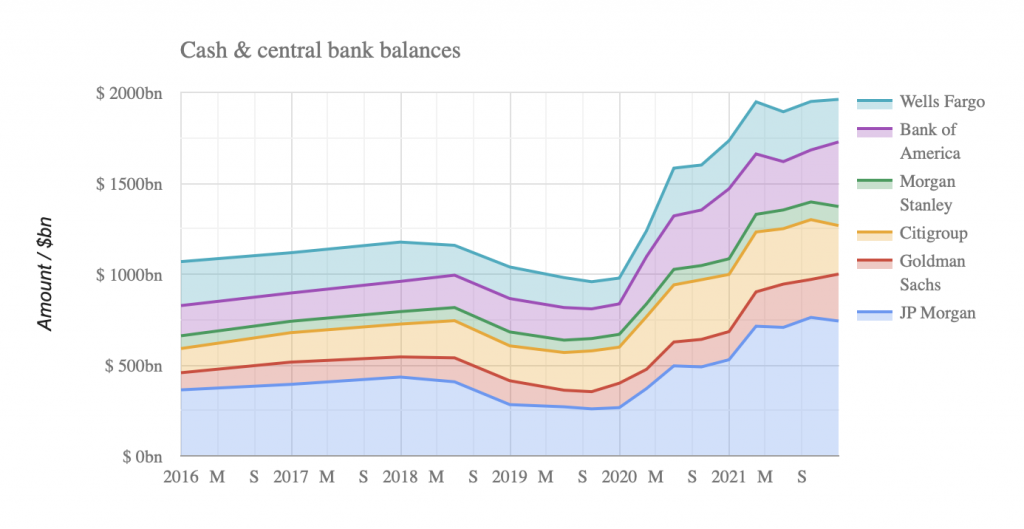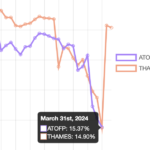Cash is probably the most important asset in the world right now. Quantitative easing led to a surge in liquidity. Now, inflation is eroding it faster than most of us can remember. But the risks of other assets like equities are making cash more attractive.
As the Federal Reserve plans to aggressively raise interest rates and unwind its vast bond holdings to combat inflation, the choice of cash for different financial institutions provides a clue to their strategy for managing the new environment. And the evidence shows that they expect a bumpy ride.
Begin with banks, which not only must hold cash for regulatory purposes, but also are themselves a store of cash for customers, in the form of deposits. Banks saw an explosion in their balance sheets during the $5.7 trillion ramp-up in QE which automatically increased their central bank balances.

QE also increased customer deposits, at the same time as the pandemic prompted a build-up in cash as a safety cushion. The Risky Finance banking tool shows that wholesale and consumer deposits at the six largest banks surged by $2 trillion during 2020 and 2021, double the increase in central bank balances during the same period.
Amid fears that QE-related balance sheet growth could breach bank regulatory limits and crowd out customer funds, in early 2021, the Fed decided to offer its own balance sheet as a store of cash for those outside the banking system, namely money market funds. These funds themselves act as a store of cash for customers, investing in Treasury bills, bank deposits and repurchase agreements.
 Levelling the Playing Field
Levelling the Playing Field
 Barclays and Labour's growth plan
Barclays and Labour's growth plan
 Plummeting bonds reflect souring UK mood for outsourcing and privatisation
Plummeting bonds reflect souring UK mood for outsourcing and privatisation
 Dimon rolls trading dice with excess capital
Dimon rolls trading dice with excess capital